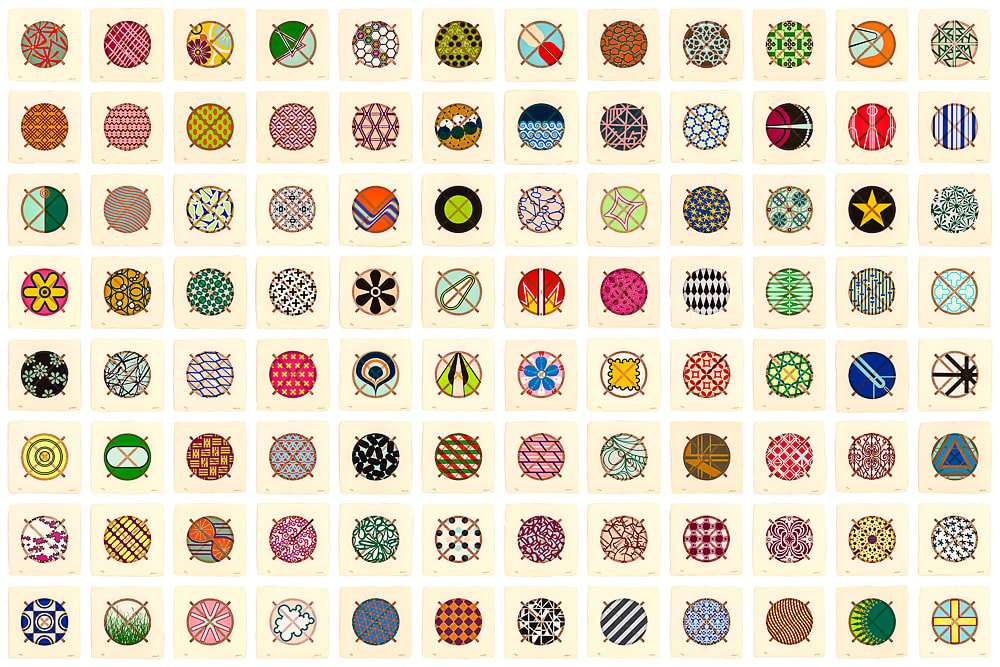Jacob Hashimoto
Kozo Misumi 450gsm
(19.4 x 19.4 cm)
Further images
Literature
Jacob Hashimoto has produced four new woodblock relief projects with Durham Press: Love’s Great Mystery, Ontological
and Absolute; The Hashimoto Index I; and the diptych The Blurred, Mystical Affirmation of the Universe and The
Calamitous, yet Normal Circumstance of the Universe. Together with Lemmata, the portfolio of etchings that Hashimoto
completed at Durham Press in 2015, these new projects offer a sequential view of the artist’s process – they continue to
investigate such topics as the interactions between the handmade and the mechanized, as well as those between natural,
digital, and personal landscapes.
While Lemmata presents spare, black-and-white images that resemble the diagrams that the artist formulates in advance
of producing a kite-based wall works, these new projects evoke the kites themselves. Love’s Great Mystery, Ontological
and Absolute is a structured, grid-like composition measuring 25 3/4 x 38 3/4 inches. Hashimoto positioned multicolor
relief-printed “kites” within a blue wood-grain background—a self-referential nod to the production process of the woodblocks where multiple blocks for each kite are created using a CNC (computer numerical control) router. For this work,
the arist placed the kites back into the negative spaces of a plywood sheet from which they were cut, allowing the precise,
programmed patterns and shapes of the kites contrast with the natural texture of the plywood.
The Hashimoto Index I comprises ninety-six relief prints, each measuring 7 5/8 inches squared and featuring a circular
kite at the center. Like with his installations and wall works, this catalog of variously patterned and colored shapes can be
transformed into various innumerable compositions, either by the artist or the viewer. Hashimoto used the Index as components for the pair The Blurred, Mystical Affirmation of the Universe and The Calamitous, yet Normal Circumstance
of the Universe, each 39 x 36 inches. Both works feature clusters of kites that seem to float across the white paper like clouds or smokestacks. Each kite is semi-transparent so that the pattern and structure of those printed behind it remains
visible, compounding several visual layers and creating contours akin to topography. These new projects delve further into
Hashimoto’s longstanding interest in landscape, contemplating how our tools for organizing and mapping space can yield
spontaneous and unexpected results when filtered through the lens of individual experiences.





